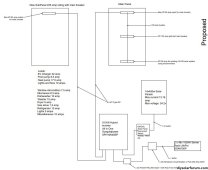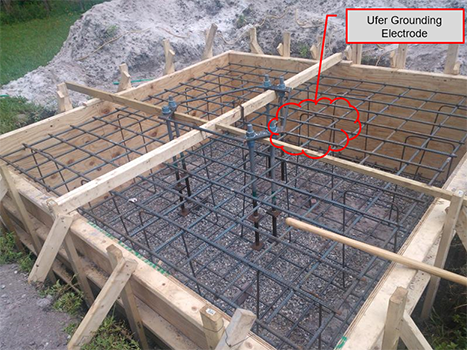zanydroid
Solar Wizard
Yeah it’s time for a new one. Might want to get a 225A busbar one for a little more flexibility when doing solar. But that could also be overkill for off grid.
So assuming I use a Square D 225 amp new subpanel, how do I feed the new subpanel with the AC output from the inverter? Do I just replace the main breaker of the subpanel with the 2P-60 amp AC output from the inverter?Yeah it’s time for a new one. Might want to get a 225A busbar one for a little more flexibility when doing solar. But that could also be overkill for off grid.
Already explained above. Remove the main breaker. Backfeed it with a 60A or 65A breaker, screwed down with the hold-down kit & with the terminals covered with the insulation from that kit.
It's probably better to get it with the main breaker so you have one in case you reconfigure it later. Or if you get Main Lug Only make sure it is convertible so you don't have to rip it out if you end up needing a main breaker in a future configuration.

No, busbar capacity doesn't help with that. It doesn't affect the reasons why I don't think you should put those, as listed in previous post.Given the new 225 amp subpanel, is it ok to have most of the loads at the subpanel, including the EV charger, as indicated?
No problem to go with #10, in fact it's way over what is needed, but it is good to use #10 to get some level of future proofing. Though if you want to consider going to 2P config (not sure if supported by MPPT) #10 is not enough to carry it. So you're not getting much future proofing for #10 as compared to different panels with lower ampacity. #8 would be enough to carry 2P of those panels.
- Is the 10 AWG ok for the proposed 14 PV solar panels? do I need to go higher (8 AWG) with the wire size?
Any position is fine. I usually backfeed at the top to keep things organized.
- Can the 2P-65amp ac input for the inverter be installed at any position of the busbar of the main service panel, or does it need to be at upper end as indicated in the diagram?
Ok. As you previously suggested, I think I'll move the EV charger from the subpanel to the main service panel while keeping the rest of the loads on the subpanel.No, busbar capacity doesn't help with that. It doesn't affect the reasons why I don't think you should put those, as listed in previous post.
Well, this was suggested by another member who has the same inverter.You sure that Dihool disconnect is NRTL listed? Does it have special feature like metal case (needed inside building). Which the go-to type (IMO brand) typically does not have.

Looking into it, Just trying to sort out material and things that I can do myself from what needs a professional to be done.Have you considered hiring out to Greenlancer for your final drawings for permitting?
Ok. As you previously suggested, I think I'll move the EV charger from the subpanel to the main service panel while keeping the rest of the loads on the subpanel.
Well, this was suggested by another member who has the same inverter.

SUNGOLD 10KW 48V SPLIT PHASE SOLAR INVERTER ??
I added labels to my disconnects and PV disconnect outside by the meter. I made these labels and printed them on sticker paper. Cheaper than paying what I saw a lot of the sticker sheets cost. You could probably get away with just printing them on paper and putting a layer of clear tape over...diysolarforum.com
I don't think your equipment choice would be eligible for permits (inverter and battery) so the planset would be to make sure you have some closely vetted and cleanly specified plans to follow.Looking into it, Just trying to sort out material and things that I can do myself from what needs a professional to be done.
Do you know where or who can provide help with preparing such plans?I don't think your equipment choice would be eligible for permits (inverter and battery) so the planset would be to make sure you have some closely vetted and cleanly specified plans to follow.
Try Greenlancer.com (as I mentioned...). It's a platform or firm for doing it, not sure how it works exactly. I haven't used it but others have.Do you know where or who can provide help with preparing such plans?
Im not sure what an ufer is, but if you have all the solar components connected to the grounding system in the house, you are good to go.The existing solar system is grounded to a ufer in my house through #8 AWG. Do I need to implement a separate grounding to the proposed solar?
Thank you for your patience with my questions.

NEC code requires an intersystems bonding connector for connecting grounding from various urilities to bond to.So would it be safe to ground the proposed system to the ground bar in the main service panel, since this main panel itself is grounded to the Ufer?


